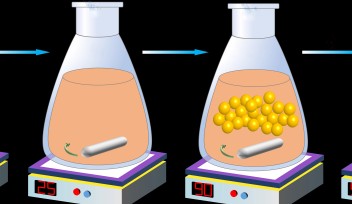A Sustainable Approach to Deep-Sea Mining
Hidden deep beneath the ocean's surface lies a world of darkness and extreme conditions, where superheated water and rare minerals meet to create one of the most fascinating and mysterious ecosystems on Earth: hydrothermal vents. Like a hot spring but on the seafloor, hydrothermal vents are the result of cold sea water percolating down fissures in the Earth's crust under the ocean. This water gets heated by the hot magma and reemerges from the chimney-like structures of hydrothermal vents. Under extreme pressure and high temperatures, and devoid of sunlight, thrives a unique community of species that uses inorganic chemicals rather than sunlight as their energy source to drive a chemosynthetic food chain. These organisms called extremophiles are postulated to be the origin of life on Earth and possibly on other celestial bodies. Over the years, basic research into the unique biological processes in this and other extreme environments has quickly translated into application-based advances. Perhaps, the most prominent is the discovery of the Taq polymerase enzyme from the bacteria Thermus aquaticus, first identified in a hot spring in Montana's Yellowstone National Park and subsequently found to exist in hydrothermal vents as well. It's the discovery of this unique enzyme that resulted in the invention of the Polymerase Chain Reaction (PCR) technique, which has rapidly become a cornerstone of both molecular biology and medical diagnostics.
However recent human activity, including the deep-sea mining of hydrothermal vents, has cast doubt on the future of this unique ecosystem. Due to the presence of a high quantity of valuable minerals like gold and silver in the vent chimneys, remote mining machines are used to target these vent sites, with Okinawa being one of the first places in the world to lead this exploration. Mining of hydrothermal vents can have a significant negative impact on life under water and on the sustainable development of our planet. Meanwhile, hydrothermal vent sites don’t exist in isolation. Recent insight into this ecosystem has revealed an underlying interconnected network whereby species from one vent site are known to travel to distant sites during their larval stage. This means the effect of mining is not just site-specific. Ongoing research is helping us better understand how connectivity affects biodiversity at hydrothermal vents and will help to shape our future conservation efforts.
New Research Findings
The Okinawa Trough is a promising location for deep-sea mining at hydrothermal vents, but a recent study by OIST researchers emphasizes the potential hazards of this activity on the biodiversity that inhabits the region’s hydrothermal vents. The study by OIST’s Marine Biophysics Unit has identified key vent sites in Okinawa, Sakai and North Knoll Iheya Ridge, which are located northwest of Iheya Island. This area is of particular interest for mining, but it also plays a critical role in maintaining connectivity across Japan and beyond. The disturbance could severely impact species populations that migrate between vent sites in the region. The new finding underscores the importance of preserving the connectivity of vent fields for maintaining the biodiversity of the deep sea.
Safeguarding the diverse species at hydrothermal vents requires protecting such key vent sites that maintain connectivity across Japan and beyond. Designating such sites as “Ecologically or Biologically Significant Areas” is one way Japan could protect these sites and lead a sustainable approach to deep-sea mining.
Check out more information on the new findings here













